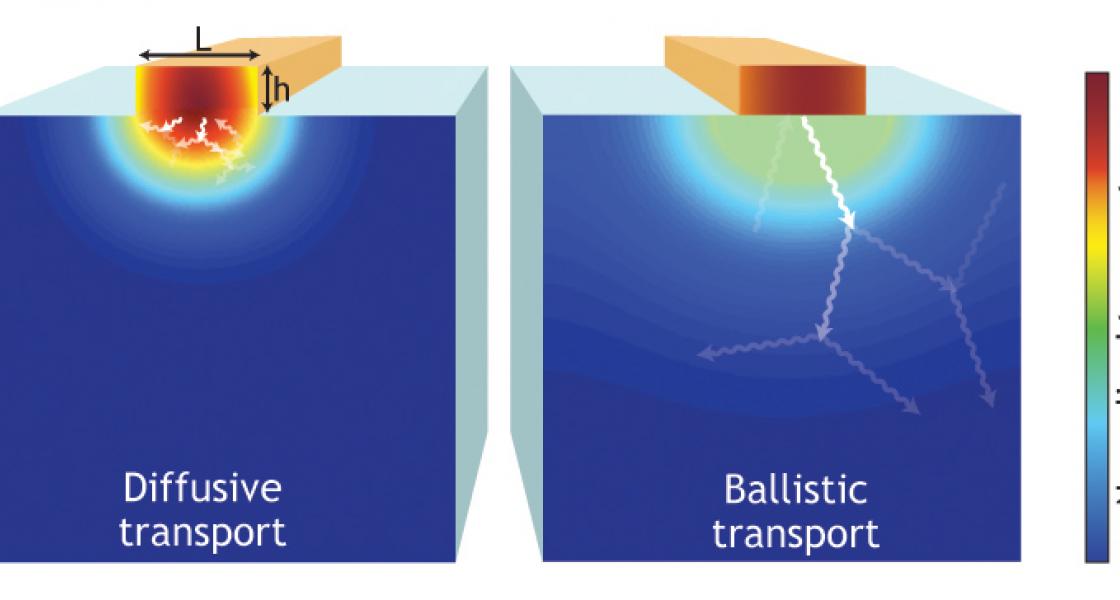Heat does not always flow as rapidly near nanostructures as it typically does in solids. Instead, it can go ballistic! Ballistic heat transfer occurs near a tiny device if its size is smaller than the distance a phonon, or lattice vibration, travels before colliding with another phonon. When this happens, heat flow is reduced, and a nanoscale hot spot is created. Ballistic heat transfer away from a hot spot can be as much as three times less efficient than ordinary heat diffusion.
This new understanding of heat transfer comes compliments of former graduate student Mark Siemens (now a postdoc in the Cundiff group), graduate student Qing Li, Fellows Henry Kapteyn and Margaret Murnane, and their colleagues from CU’s Department of Mechanical Engineering, MIT, and Lawrence Berkeley Labs. Siemens led the JILA team that made the first observations and measurements of ballistic heat transport from nanostructures. His observations proved that nanoscale heat flow is slower than what is predicted by the simple diffusion of heat from a hot to a cold region, as first described by French mathematician and physicist Joseph Fourier in 1822.
In his experiments, Siemens first heated an array of nanowires with a femtosecond laser and then measured how fast the heat dissipated into two different materials, silica and sapphire. He observed ordinary heat diffusion through the silica where the distance between phonons was short, but ballistic heat transport through the sapphire where the distance between phonons was much longer. The two different kinds of heat transfer are shown in the figure.
In ballistic heat transport, the heat energy is carried away from the nanowires by phonons that travel relatively long distances before colliding with another phonon. Ballistic transport makes it difficult to even define a temperature near the interface of the nanowires and the sapphire. This behavior leads to a thermal energy distribution that is different from what is predicted by the Fourier Law, which overestimates heat flow under these conditions. Siemens and his colleagues were able to correct the Fourier formula by including an additional term accounting for ballistic transport. Then they were able to quantitatively measure this value.
The Kapteyn/Murnane group expects its new understanding of ballistic heat transport will significantly impact heat management in future nanoscale devices. It could also play a role in thermal management in nanoelectronics, thermoelectric and photovoltaic energy conversion, nanomanufacturing, and nanoparticle-based heat therapies. - Julie Phillips




